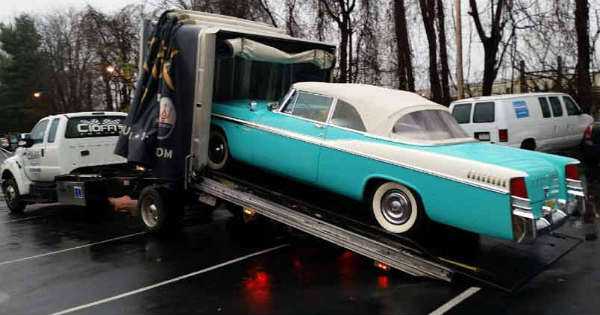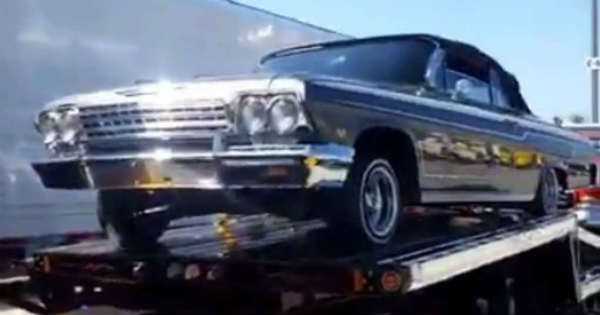Transporting a muscle car on a utility trailer is a sentimental journey with precious memories. With their powerful engines and iconic designs, these machines have always been more than cars. They remind you of the weekends you spent in the garage, working on the engine and creating memories with your dad. Muscle cars connect generations; they`re physical reminders of shared moments of happiness. The bond between fathers and their children becomes more profound as dads pass down their knowledge and teach the intricacies of car engines. This connection instills a passion for these powerful machines that transcend generations.

Transporting muscle cars on utility trailers can be the start of a nostalgic adventure. Memories flood back as the car is loaded onto the trailer. This moment recognizes the car`s impact on the bond between a father and a child. Every bump, turn, and mile covered on the highway holds significant meaning as the trailer rolls along.
The journey`s vibrations and sounds evoke echoes of laughter and excitement with your dad. Whether attending a car show or leisurely driving along a picturesque route, these shared moments nourish your soul.
Here`s a guide to transporting your muscle car with a utility trailer:
- Choose The Right Trailer
A utility trailer can be convenient and cost-effective, whether taking your muscle car to a track day event or moving it to a new location. However, it takes careful planning and execution to transport a valuable car.
The first and most crucial step is choosing the right trailer to transport your muscle car. Select a utility trailer appropriate for your muscle car`s size and weight. Consider renting a trailer designed for transporting cars. Most utility trailers have ramps and other features to secure and transport vehicles safely.
Ensure the trailer`s weight capacity exceeds your muscle car`s weight. It`s best to check the condition of the trailer`s tires, brakes, and lights before loading your car.
- Secure Your Muscle Car
One of the top uses for utility trailers is transporting your valuable muscle car to its destination as safely as possible. So, after selecting the appropriate trailer, the next step is to attach your muscle car to it securely. Start by placing the car in the middle of the trailer and ensure its tires align with the trailer. You can install an E-track to secure your muscle car better.
You can follow these steps:
- Use either heavy-duty ratchet straps or wheel nets to secure the car.
- Tighten the straps and attach them to sturdy anchor points on the trailer.
- Place padding or blankets between the straps and your car`s body to prevent potential damage from friction.
If you`re transporting a vintage or classic muscle car, you can use soft straps around the tires instead of putting pressure on the vehicle`s frame.
- Distribute Weight Properly
Safe towing requires proper weight distribution. Ensure that most of your muscle car`s weight is above the trailer`s axles. Use adjustable wheel chocks or tie-down points to appropriately distribute weight on your trailer.
Avoid putting excessive weight at the front or back of the trailer. Doing so can affect pulling stability and how well the brakes work. Meanwhile, it helps to check if the tongue weight is within the manufacturer`s recommended range. The tongue weight refers to the weight on the hitch.
- Perform A Safety Check
Performing a comprehensive safety check before you start your journey is essential. This way, you can ensure that everything operates properly. You can start by applying lubrication to the wheel bearings of the trailer. Adjusting them can help reduce friction while in transit.
Check if all the lights on the trailer work properly. These include brake lights, turn signals, and running lights. Confirm if the trailer is attached to your towing vehicle correctly. Pull the safety chains to check if they`re connected securely, forming a crisscross pattern for extra safety.
- Drive Safely
Prioritizing safety while driving is vital when you`re transporting a muscle car. Always keep a safe distance from the car before you, giving yourself enough time to stop.
Take note of these safety tips:
- Avoid changing lanes or making sharp turns to keep the trailer from wobbling. If your trailer starts to sway, apply the brakes and slow down to regain control.
- Be careful when merging onto roads or changing lanes. The trailer may have larger blind areas than the towing vehicle.
Remember that pulling a trailer makes your car heavier and longer, affecting how it drives and stops.
- Plan Your Route
You can avoid potential road hazards by planning your route. Utilizing global positioning systems (GPS) or map applications can help you find routes appropriate for towing. It helps to verify if there are any areas with low clearance, such as tunnels or bridges. This way, you`ll know if your trailer and muscle car can pass through safely without any problems.
Checking weight restrictions on specific roads or bridges can help avoid fines or potential damage to your trailer. You can make frequent stops to check your trailer`s condition. Inspect the straps and fasteners at each stop to ensure secure attachment of your muscle car. Road vibrations and vehicle movement might loosen straps, so tighten them again.
Conclusion
When you follow these detailed procedures and helpful advice, transporting your muscle car with a utility trailer may be a simple and secure task. Preparation and attention to detail can facilitate a smooth and safe journey. It makes you feel confident knowing your car is in safe hands with proper equipment and procedures.

